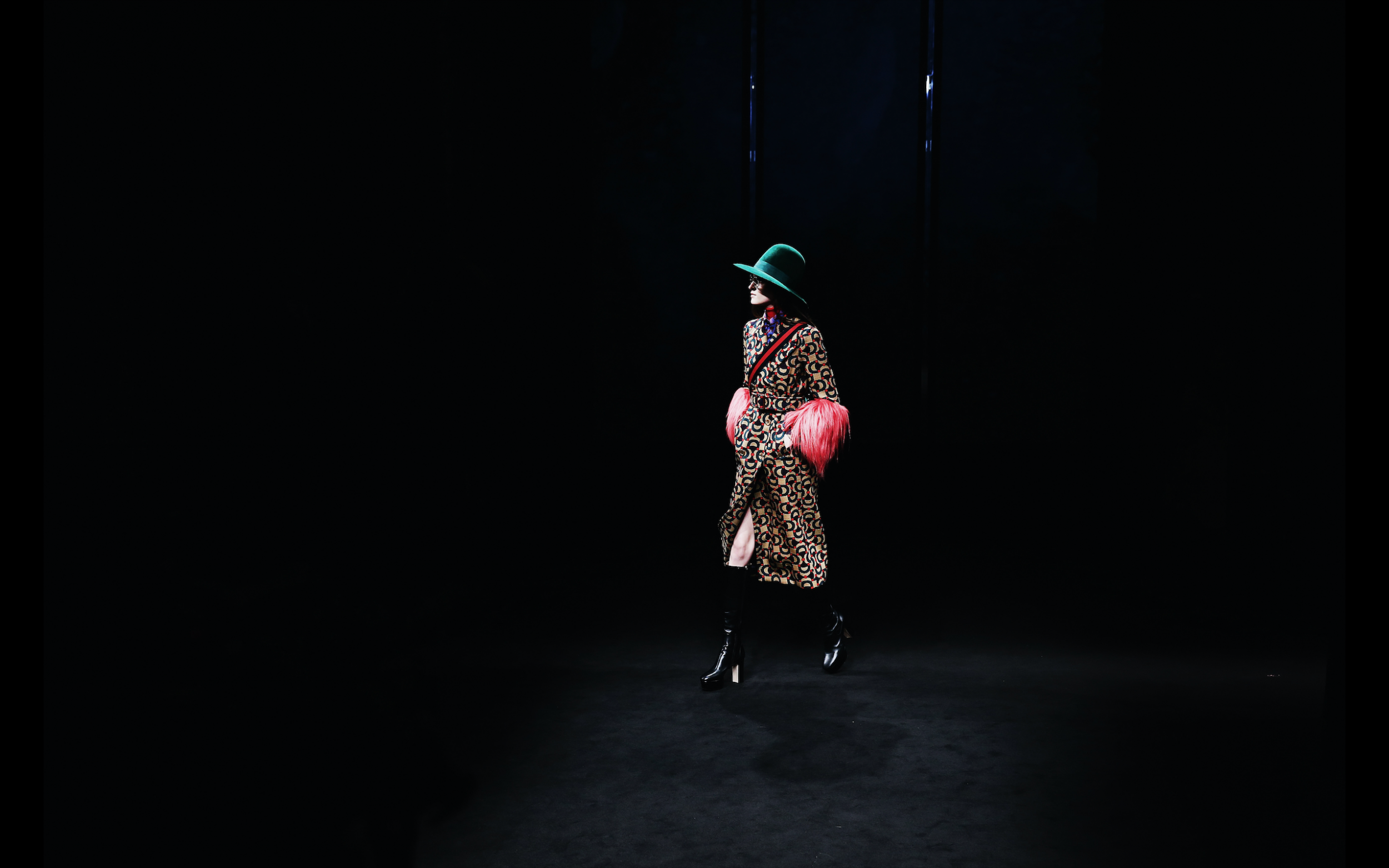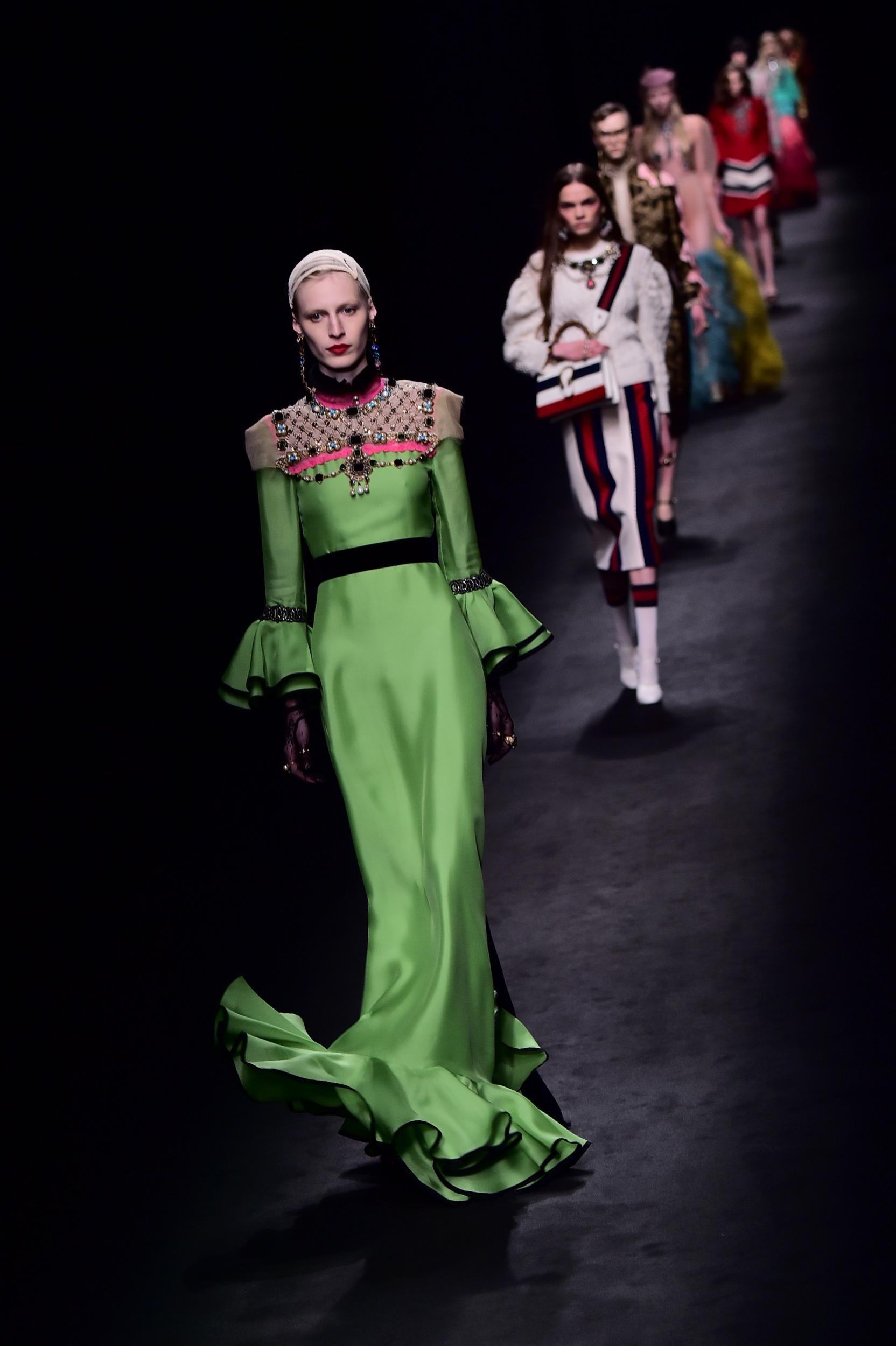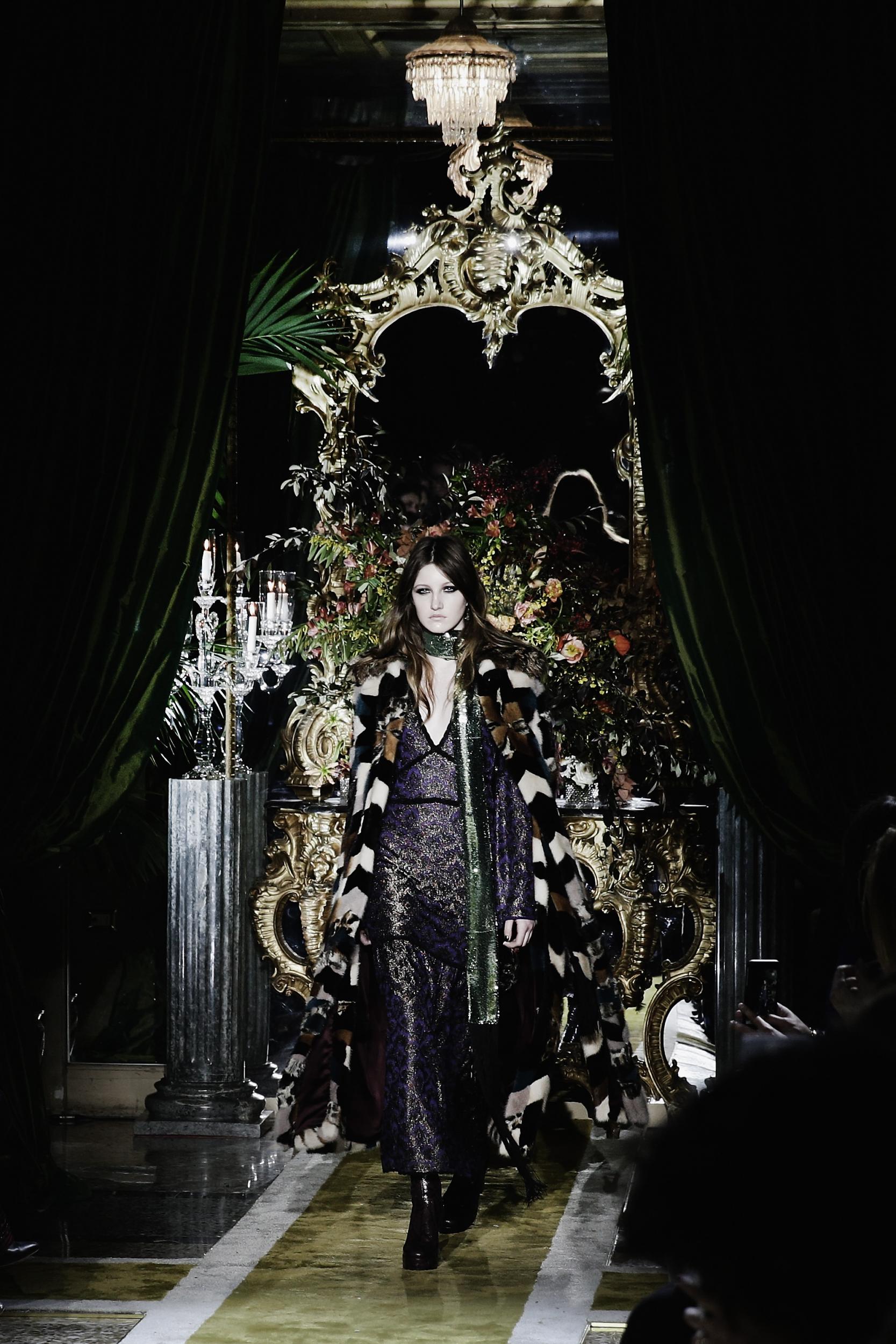An obscure Gucci, a single-minded Fausto Puglisi and a very Cavalli Roberto Cavalli, in Milan
The opening day of the Milan autumn/winter 2016 womenswear collections offers a view of woman coloured by schizoprenia and capitalism, says Alexander Fury

Your support helps us to tell the story
From reproductive rights to climate change to Big Tech, The Independent is on the ground when the story is developing. Whether it's investigating the financials of Elon Musk's pro-Trump PAC or producing our latest documentary, 'The A Word', which shines a light on the American women fighting for reproductive rights, we know how important it is to parse out the facts from the messaging.
At such a critical moment in US history, we need reporters on the ground. Your donation allows us to keep sending journalists to speak to both sides of the story.
The Independent is trusted by Americans across the entire political spectrum. And unlike many other quality news outlets, we choose not to lock Americans out of our reporting and analysis with paywalls. We believe quality journalism should be available to everyone, paid for by those who can afford it.
Your support makes all the difference.Gucci likes to obscure. They obscured their autumn/winter 2016 clothes from the press behind a gauzy scrim; they obscured their inspiration, pre-show, in a ramble of notes quoting French philosophy, titling the collection “Rhizomatic Scores” and sending dozens of journalists scrambling to google. The botanical rhizome is a nest of roots, shoots and nodes - the foundation and food source of plants. Philosophically, it’s about a scramble of ideas and references with no beginning and end. Picking a tangent and running with it.
It’s an apt description of what the designer Alessandro Michele has been doing at Gucci, in collections with no beginning or end point, at least thematically. His shows intermingle multiple references, high and low, evening and day, into a glorious, tangled web of inter-referential clothing, without hierarchy. And, to some minds, without reason. It’s a lot of stuff.
The founding fathers of rhizomatic philosophy, Gilles Deleuze and Félix Guattari, titled their two-volume theological treatise “Capitalism and Schizophrenia.” That makes more immediate sense to the layman than rhizo-whatsit. There’s a schizophrenic sense to Gucci today, a fractured vision of multiple personalities where a pink fox-fur chubby can be followed by a serpentine sequinned dress and then a red trouser suit. It’s breaking apart the singular, succinct message we link to a fashion show, the idea of a particular “look” - a shoe, a hemline, a shoulder-shape - defining the next season. Gucci is more of a free-for-all.
Except it’s certainly not free. Capitalism is, of course, the ultimate goal: and it’s being achieved. Gucci’s sales rose 4.8 per cent in the fourth quarter of 2015, triple analysts’ estimates and attributed directly to Michele’s designs: their wide appeal, and the hype they’ve generated.
What will people be buying into for autumn/winter 2016? Possibly the most significantly different of Michele’s offerings to date, mining his favoured seventies styles but pushing later in the decade. Michele told me that the seventies are the brand’s “soul” - in rhizomatic terms, you might call it the roots. So he forged forward to the latter half, where silhouettes grew wider and preempted the boulder-shoulder jackets of the eighties. This was a paean to Yves Saint Laurent, in subtle contrasts of colour - a celadon-green satin blazer, says, with a powder-blue skirt - and hints of his 1977 Opium-inspired collection (those shoulders, plenty of orientalist embroideries, lots of brocade); but those were combined with the hyper-modern touch of graffiti artist GucciGhost spraying tags on handbags and mink coats, disfiguring to reconfigure. And, of course, the models dressed in their dressing-up box attire and blurred by that gossamer screen (which, truth be told, was more irritating than enigmatic, smudging embroideries and deadening colour) made them resemble Gucci ghosts themselves, albeit from a recent past.

Let’s nail down the concrete stuff: this Gucci collection had a lot of the old, of the motifs that Michele has been mining and using to define a new identity for Gucci beyond logo-ed canvas and the worn-out sexiness with which the name used to be synonymous. His wildlife embroideries (parrots, panthers, tigers and wriggling snakes) and that oddball styling (oversized glasses, deliberately mismatched garments, grannified handbags) were well in evidence. The silhouette, however, felt newer, those wide shoulders combined with extreme, attenuated and pin-narrow evening downs hiked-up on high platforms.
The message was sharper, less drippy and safe - dare we say more fashion, in that it felt like a proposition of silhouette rather than a collection of clothes to be dissected. Which will, of course, happen. But Gucci this season is less easily assimilated, a touch trickier, and perhaps therefore more critically satisfying than prior incarnations. Its felt different, like a development. Which, after the financial turnaround now underway, was the next task for Michele. He tackled it.
Fausto Puglisi’s development is more tricky. Puglisi has an identifiable signature - part Gianni Versace, part Donatella Versace, a big chunk Calabrian chutzpah. It generally means skirts are cut too short and slits a little too high, and leads to an idiosyncratic direction that, like Gucci, is ill-suited to change.
Puglisi has shown clothes much like those he presented for winter many times before, with their dazzling embellishment and colours that less clash and more crash together. Some tailoring, chopped in half in contrasting shades, looked sharp; others, with oddly patched-in panels of contrast coloir, wound up looking like Puglisi just ran out of fabric. Or maybe of time, to come up with something that felt newer - which is something afflicting a few designers these days. Puglisi's echoes of Americana, in the collegiate varsity jackets and beaded palm trees and gold-pocked cowboy boots, bore remarkable resemblence to ideas he has explored before, repeatedly. When does a hallmark become humdrum? The shapes were familiar, too. For converts, it easily converts to dollars - or Russian rubles, or Brazilian real, both of which seem strong markets for Puglisi’s strong clothes, his tart colours (lingonberry, electric green, toothpaste aqua) in tarty styles.
If you’re on the fence though - like me, who sometimes loves and sometimes loathes - there was little to convince you that these clothes were especially remarkable compared to Puglisi’s previous output. That said, this show hit its stride and picked up the energy about halfway through: perhaps when you realised this was all you were going to get and instead you could sit back and enjoy the spectacle. Of minor Italian celebrities snapping images of themselves as opposed to clothes, for sure. But also of the garments themselves, garish, seemingly irrelevant, but quite single-minded. Puglisi has an aesthetic and believes in it. Sometimes that belief is blind - to colour, often to good taste - but it’s resolutely honest.

Roberto Cavallio felt honest, too, in the mould of Peter Dundas’ previous work for Emilio Pucci (their new designer, Massimo Giorgetti, shows his second catwalk show for the label tomorrow). This was Belle Epoque meets rock, sinuous sylphlike silhouettes in exquisitely beaded fabrics matched with heavy-soled glam platforms zinging with colour. After last season’s volte face - which I loved, but most others loathed - it was a return to an even keel, or perhaps even solid ground, for Cavalli. You could see the astute commercial reality to Dundas’ printed silk crepes, his beaded chiffons and tulles, his elaborately worked furs and reptile skins, and to pragmatic denim. It all looked like it cost a lot, and probably will. There was one show for press and then another for buyers immediately after, in a storied Milanese palazzo. The latter, especially, was packed.
Capitalism, sure, but no schizophrenia. This was a single-minded sell.
Join our commenting forum
Join thought-provoking conversations, follow other Independent readers and see their replies
Comments